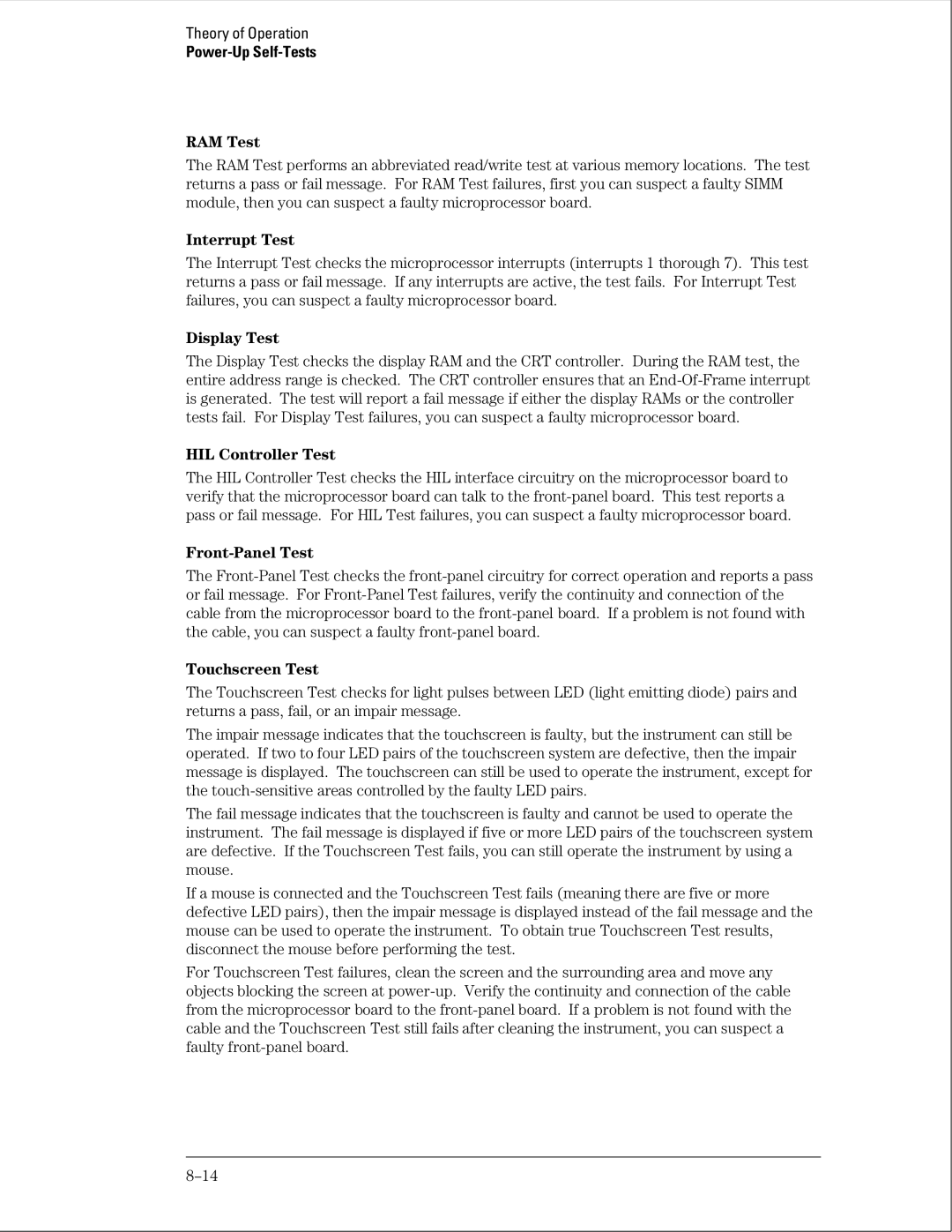
Theory of Operation
RAM Test
The RAM Test performs an abbreviated read/write test at various memory locations. The test returns a pass or fail message. For RAM Test failures, first you can suspect a faulty SIMM module, then you can suspect a faulty microprocessor board.
Interrupt Test
The Interrupt Test checks the microprocessor interrupts (interrupts 1 thorough 7). This test returns a pass or fail message. If any interrupts are active, the test fails. For Interrupt Test failures, you can suspect a faulty microprocessor board.
Display Test
The Display Test checks the display RAM and the CRT controller. During the RAM test, the entire address range is checked. The CRT controller ensures that an
HIL Controller Test
The HIL Controller Test checks the HIL interface circuitry on the microprocessor board to verify that the microprocessor board can talk to the
Front-Panel Test
The
Touchscreen Test
The Touchscreen Test checks for light pulses between LED (light emitting diode) pairs and returns a pass, fail, or an impair message.
The impair message indicates that the touchscreen is faulty, but the instrument can still be operated. If two to four LED pairs of the touchscreen system are defective, then the impair message is displayed. The touchscreen can still be used to operate the instrument, except for the
The fail message indicates that the touchscreen is faulty and cannot be used to operate the instrument. The fail message is displayed if five or more LED pairs of the touchscreen system are defective. If the Touchscreen Test fails, you can still operate the instrument by using a mouse.
If a mouse is connected and the Touchscreen Test fails (meaning there are five or more defective LED pairs), then the impair message is displayed instead of the fail message and the mouse can be used to operate the instrument. To obtain true Touchscreen Test results, disconnect the mouse before performing the test.
For Touchscreen Test failures, clean the screen and the surrounding area and move any objects blocking the screen at
